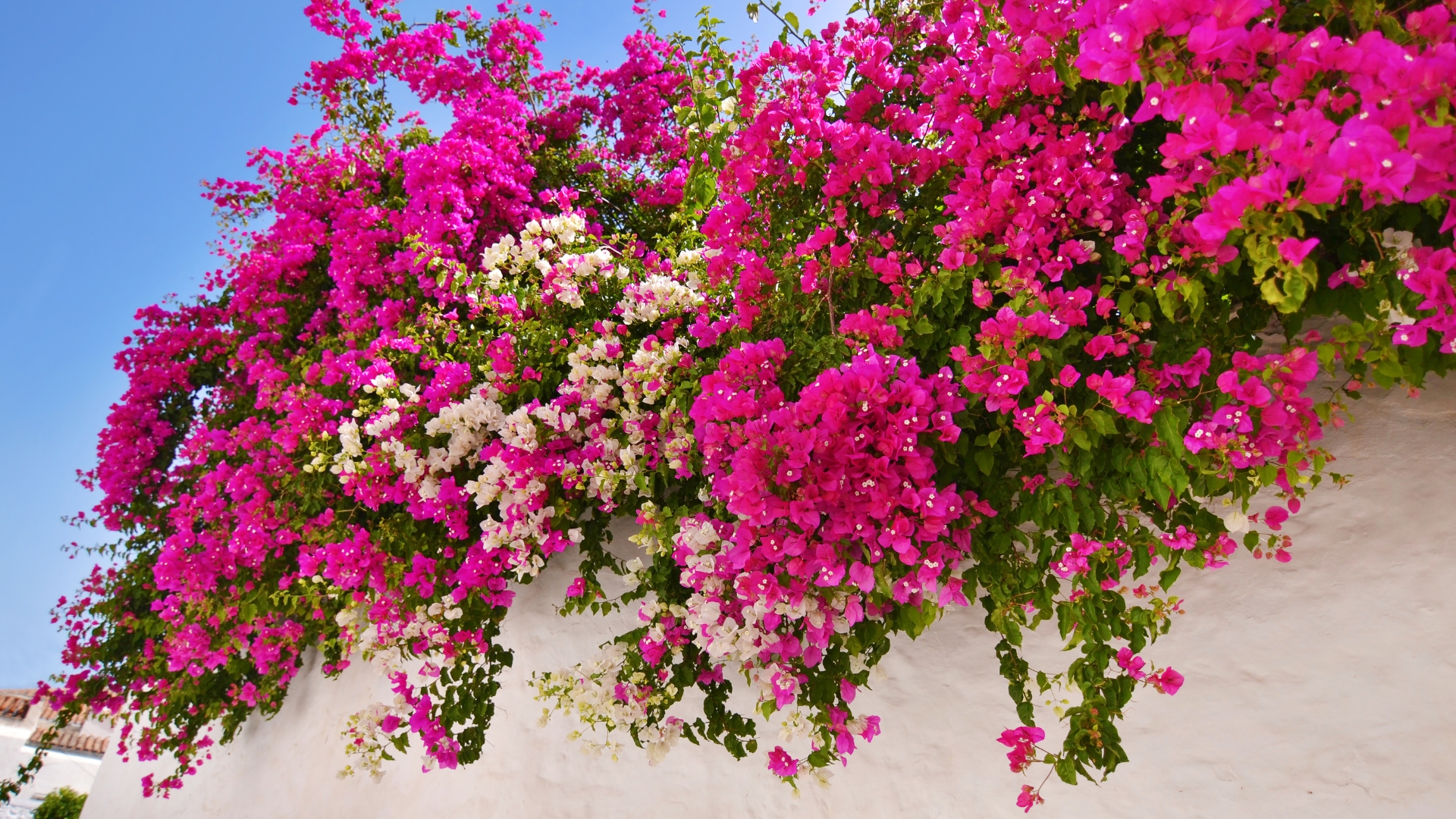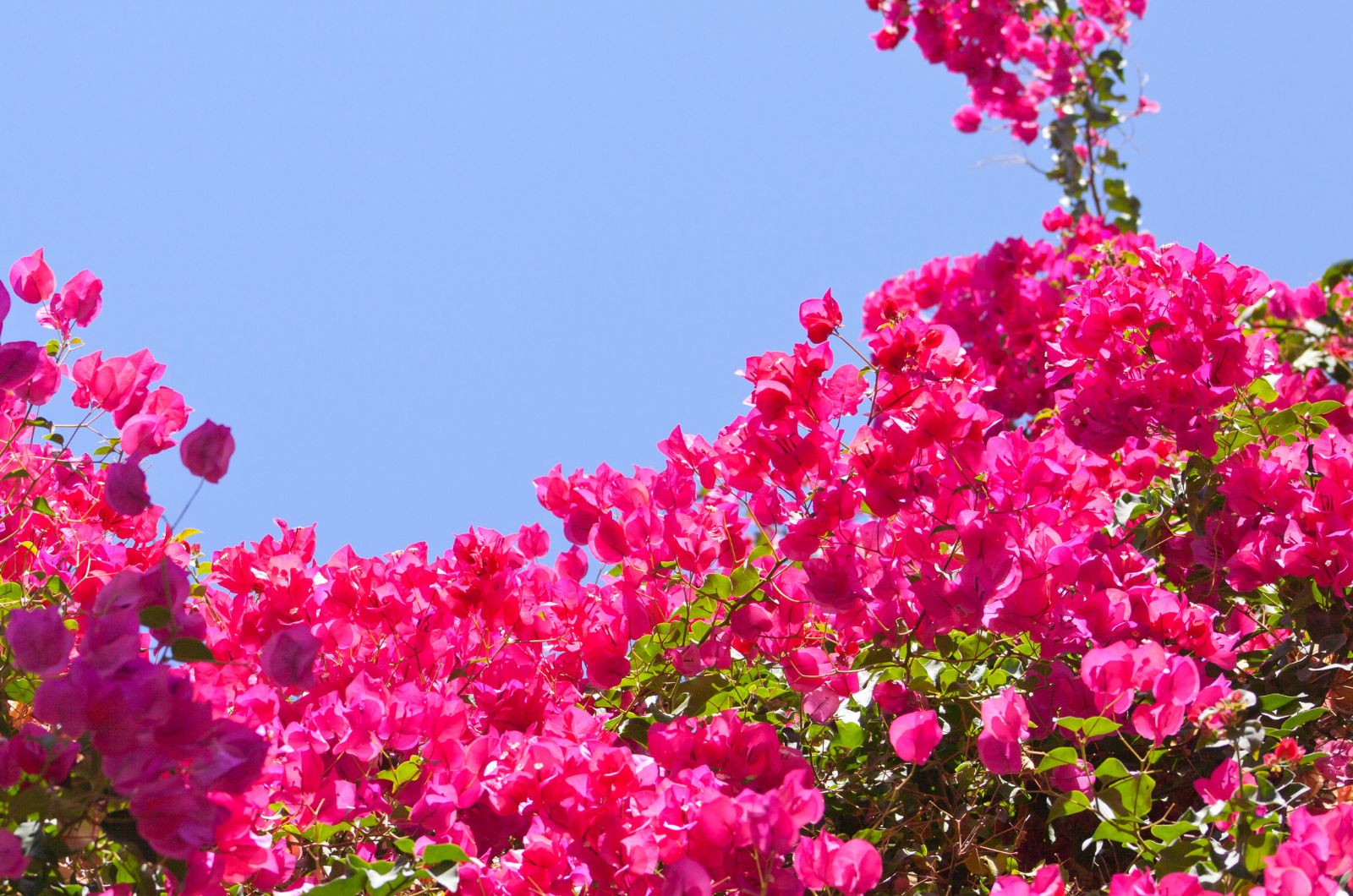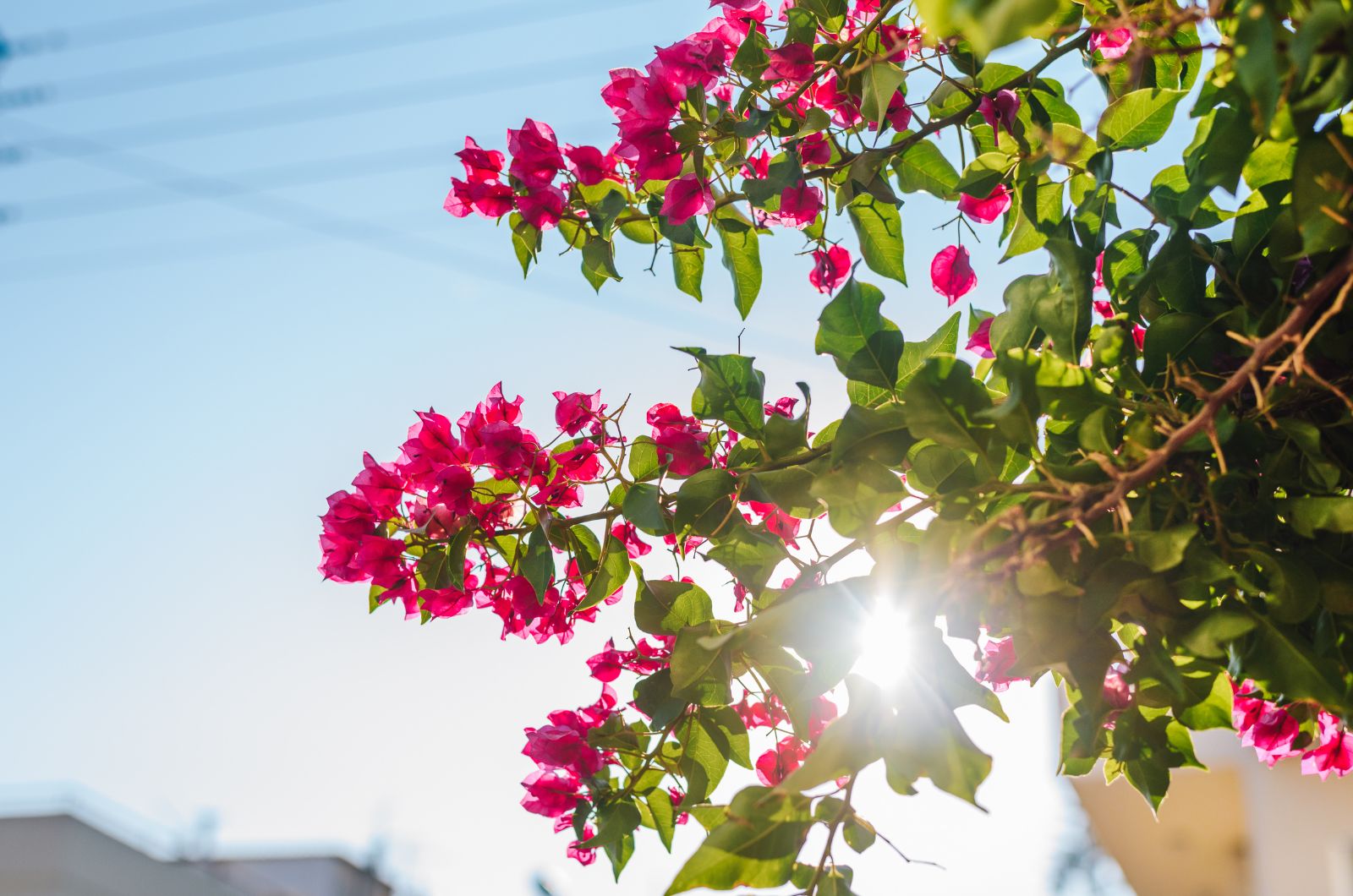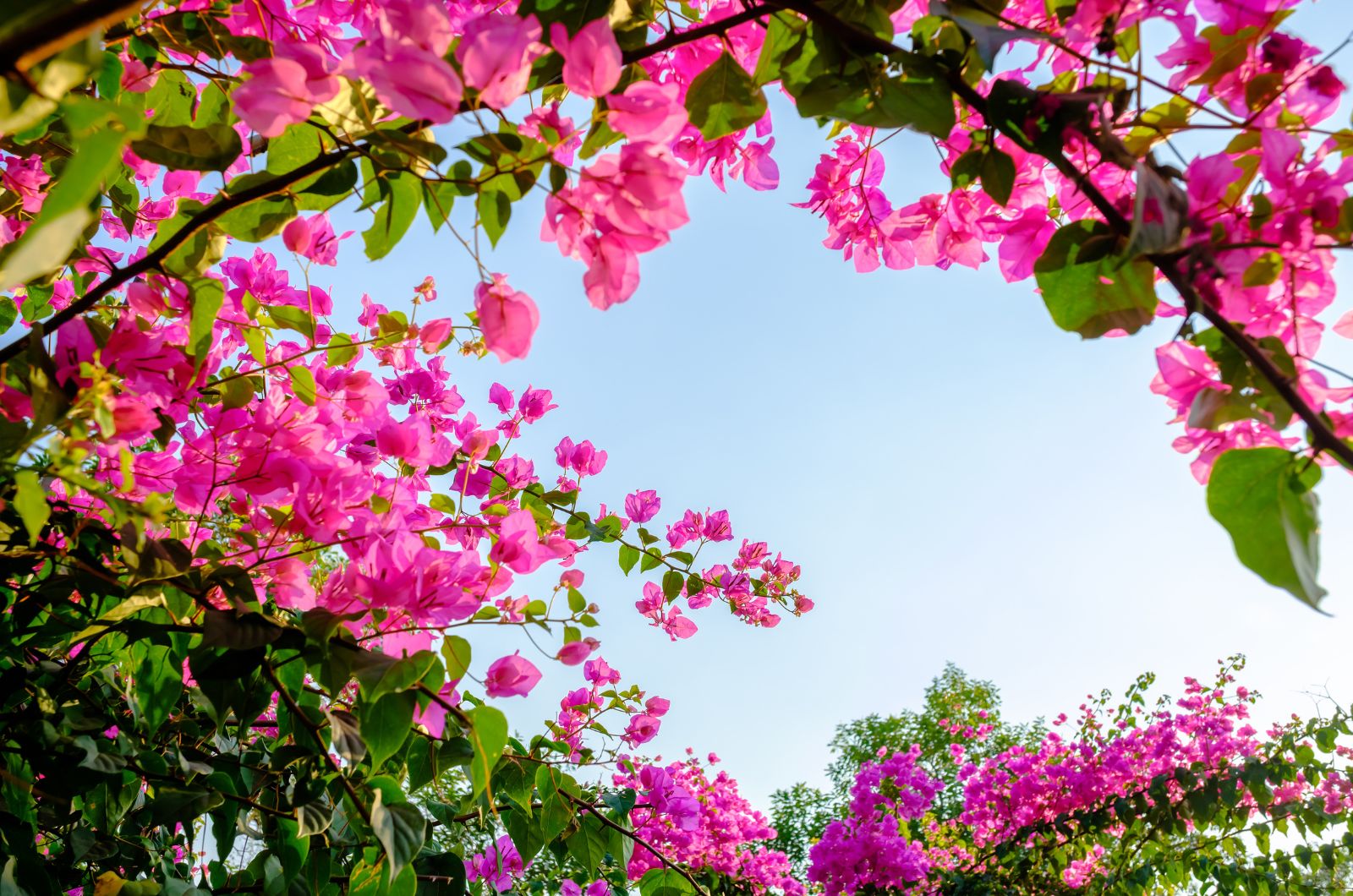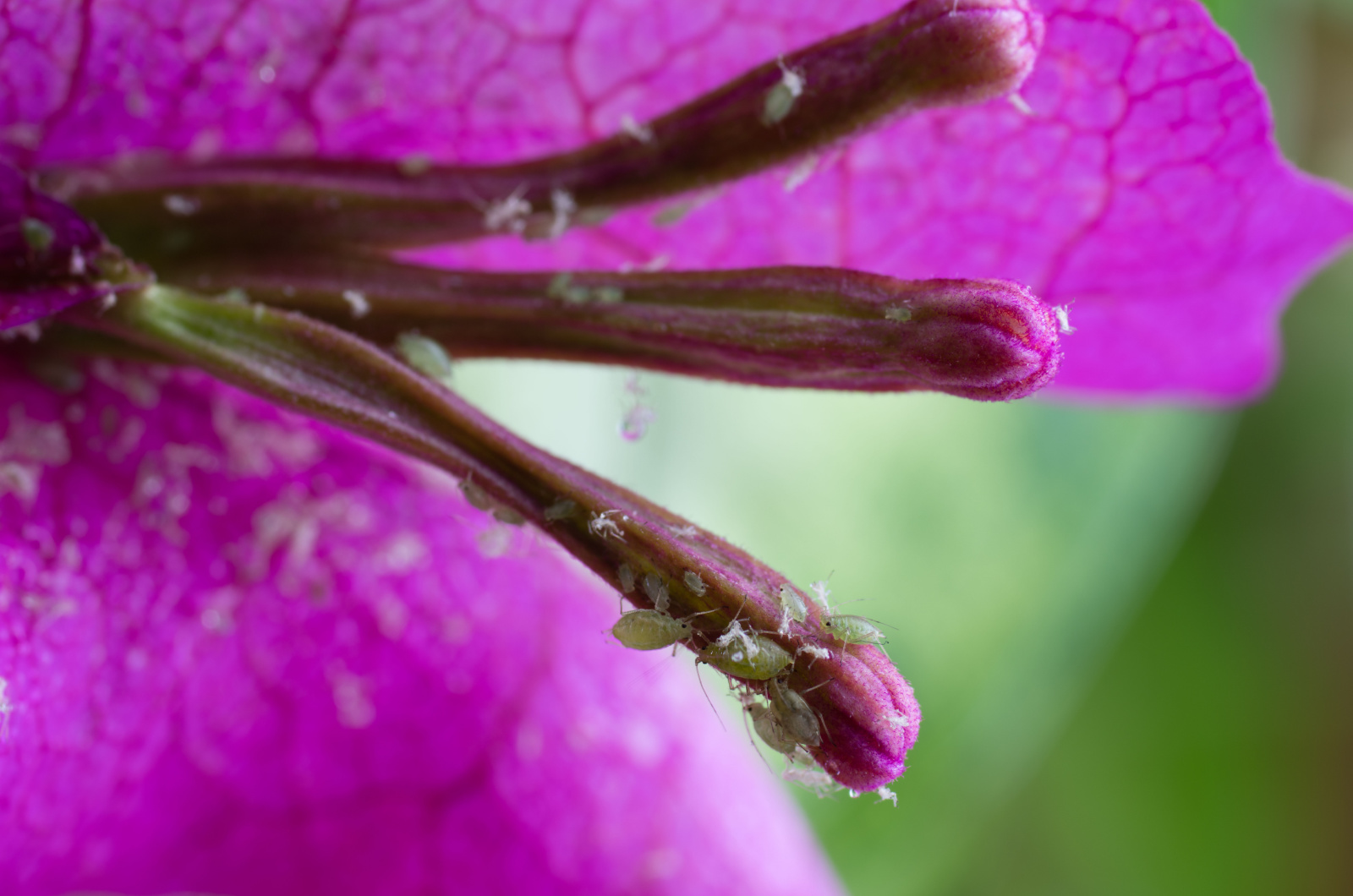Bougainvillea is one of the most common flowering vines found in the US gardens. The main reason is the lovely blossoms draped in vivid pinks, purples, and oranges, making every other flower blush with envy.
Because of its trailing habit, this species is grown on trellises, arches, and similar structures. If you’re enchanted by the appearance of these plants, I’m happy to inform you that they’re super easy to grow!
In this article, I’ll show you how to care for Bougainvillea, including how to plant it and deal with common issues.
Let’s get started!
How To Plant Bougainvillea
The essential step you need to take if you decide to grow Bougainvillea is to select a sunny spot. This species can tolerate lower light levels but, in that case, they don’t display nearly as many blossoms.
Additionally, pay attention to the variety you choose because these are climbing plants and you’ll need to ensure structural support. Due to their trailing growth habit and densely packed foliage and blossoms, these species are often used for blocking a nosy neighbor’s view.
Bougainvillea plants do best if grown in free-draining and fertile soil types, so I highly recommend mixing in some compost prior to planting.
If you are starting your Bougainvilleas from seeds, do not sow them too deeply; make sure they’re just below the soil surface and covered in a thin layer of soil.
You can also start the seeds indoors and transplant Bougainvillea seedlings if you’re afraid birds or other critters will munch on them.
A Complete Bougainvillea Care Guide
If you’ve successfully planted your Bougainvilleas, there are steps to follow when it comes to maintenance.
First, make sure to irrigate these flowering beauties only when the growing substrate feels dry to the touch. Overwatering your Bougainvilleas can result in fewer to no blossoms and it also increases plant’s susceptibility to pests and diseases.
You’ll most likely need to irrigate these plants two or three times a month. Water them more frequently if there’s a long period of drought in your region.
Don’t spare water and give your Bougainvilleas a good soak so that the roots absorb enough moisture until the next watering.
Late winter or early spring is the best time to prune Bougainvillea species. The flowering season ends in this period and the plant doesn’t generate new growth.
Be careful when handling these plants because their vines and branches have pretty sharp thorns. Thick gloves are life savers in this case and can save you from painful scratches.
How To Grow Bougainvillea On A Trellis
The most important thing about a trellis for this plant is that it should be sturdy. Remember that these vining plants can grow up to 30 feet and get heavy, so the only way to keep them in place is to attach them to a sturdy trellis.
Once your Bougainvillea fully matures, it will be almost impossible to replace the trellis. If you can’t find a suitable trellis, an A-frame or archway will do the job.
When planting your Bougainvilleas, aim for a spot as close to the trellis as possible. Loose thread or twist ties are perfect tools for securing the vines to the trellis.
Be careful not to secure the vines too tightly because that could easily damage them. Of course, wear thick gloves when attaching your Bougainvillea to the trellis.
As the Bougainvillea vines develop further, you can remove the ties; tuck back the ones that spread outside the trellis or prune them down to size.
Common Issues
There’s probably one thing gardeners don’t like about Bougainvillea plants. These plants are susceptible to a lot of pests, including aphids, loopers, and caterpillars, and they can destroy the plants completely if not treated properly.
If there are holes on the Bougainvillea leaves or you notice smaller wounds on branches, inspect for pests and use any of these pest control methods before it’s too late.
However, avoid using pesticides if possible because you could deter pollinators and other beneficial insects.
Apart from pests, there are some fungal diseases that could affect your Bougainvillea; roots and leaves are typically the target of fungi.
The good thing is that you can prevent fungal infections in your Bougainvillea if you follow the correct watering regime. When irrigating these plants, avoid wetting the foliage because damp conditions will attract various fungi.
Bougainvillea is definitely one of the prettiest plants you can add to your garden. But in order to get it to display its gorgeous flowers, you need to ensure the best conditions as described in our guidelines.

